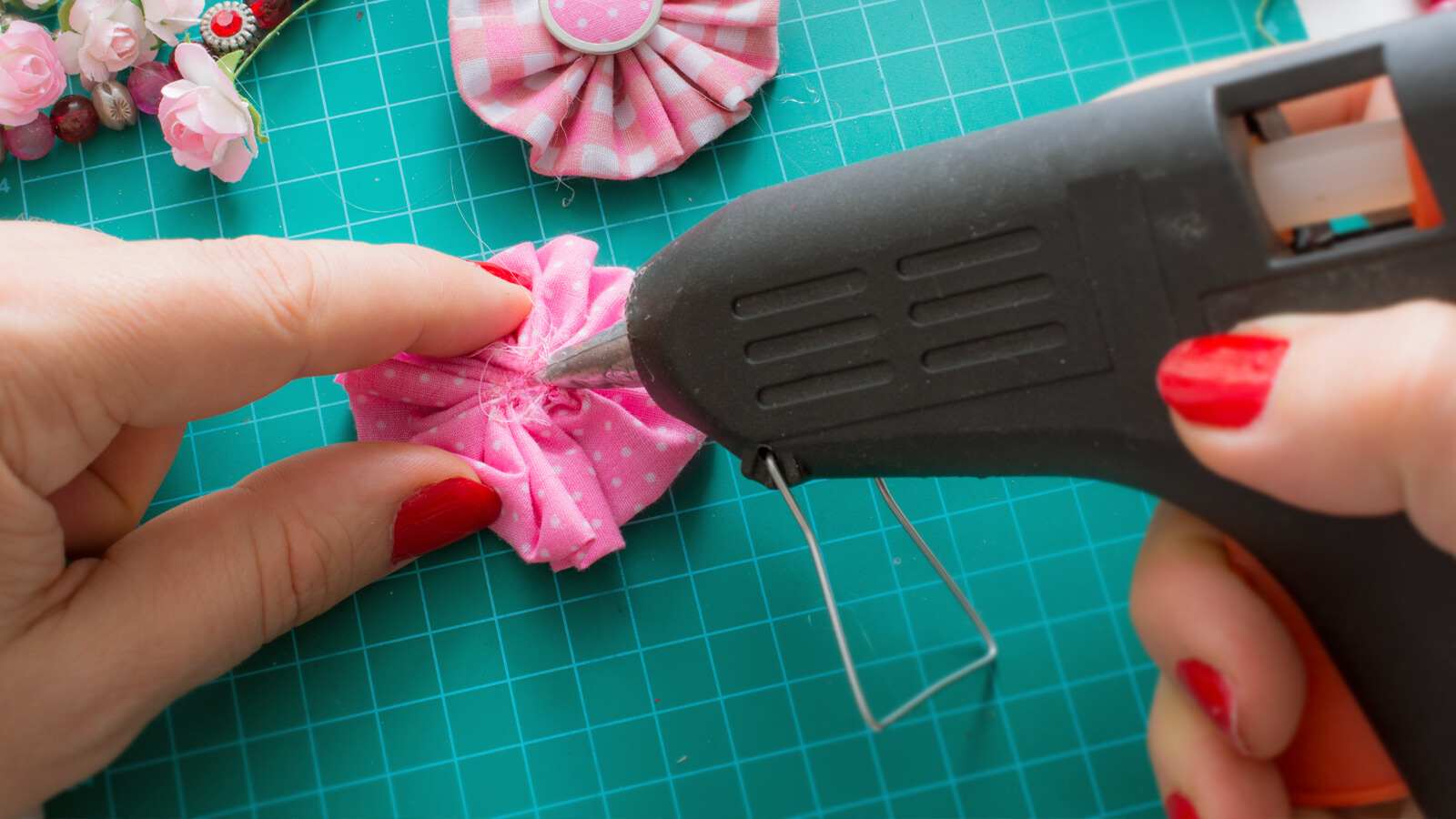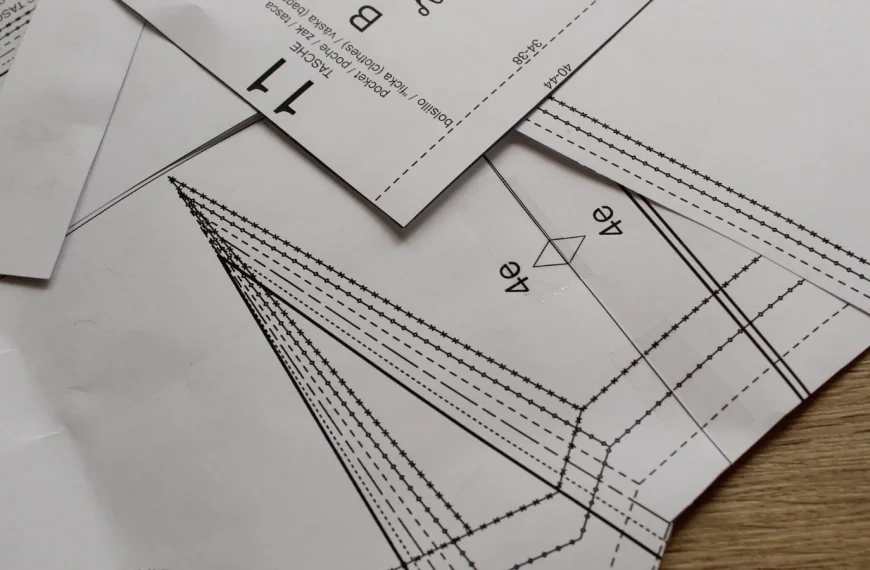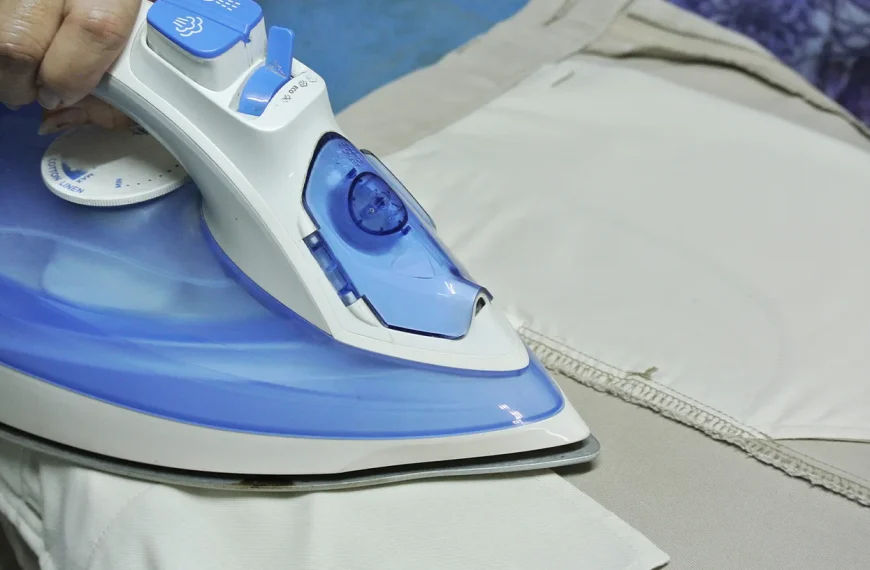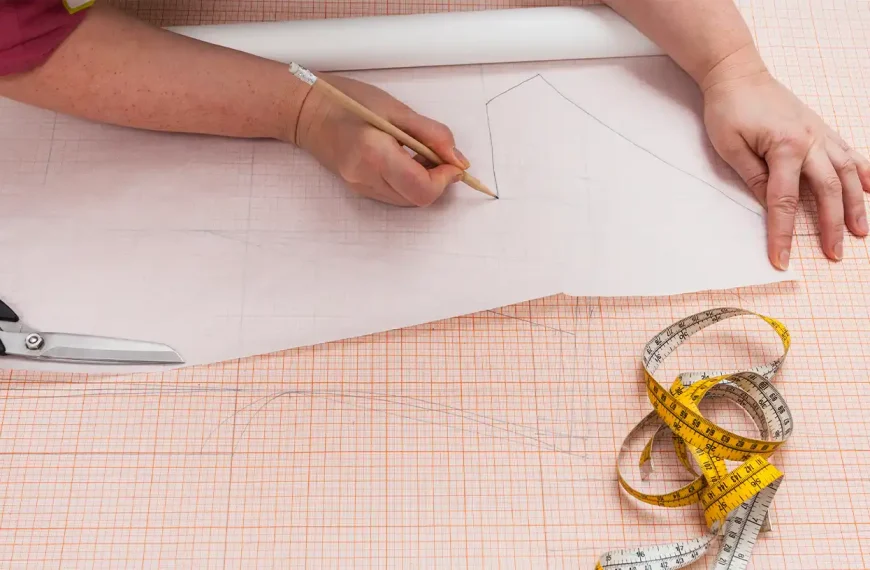Are you looking at that torn corner of your favorite fabric tote and wondering if a dash of hot glue can save the day? You’re not alone. Many crafters and DIY enthusiasts reach for their trusty glue guns when faced with a fabric fix.
But is it the right tool for the job? Does hot glue work on fabric well? Our blog is here to guide you through using hot glue on fabric effectively, ensuring longevity without sacrificing your materials’ integrity. Get ready to learn some nifty tricks that will make your crafting smoother and safer!
Does Hot Glue Work on Fabric? The Feasibility of Hot Glue Gun on Fabric
Using a glue gun seems like a quick and effective way. But let’s first discuss the feasibility of hot glue on the fabric.
How does Hot Glue Work on Fabric?
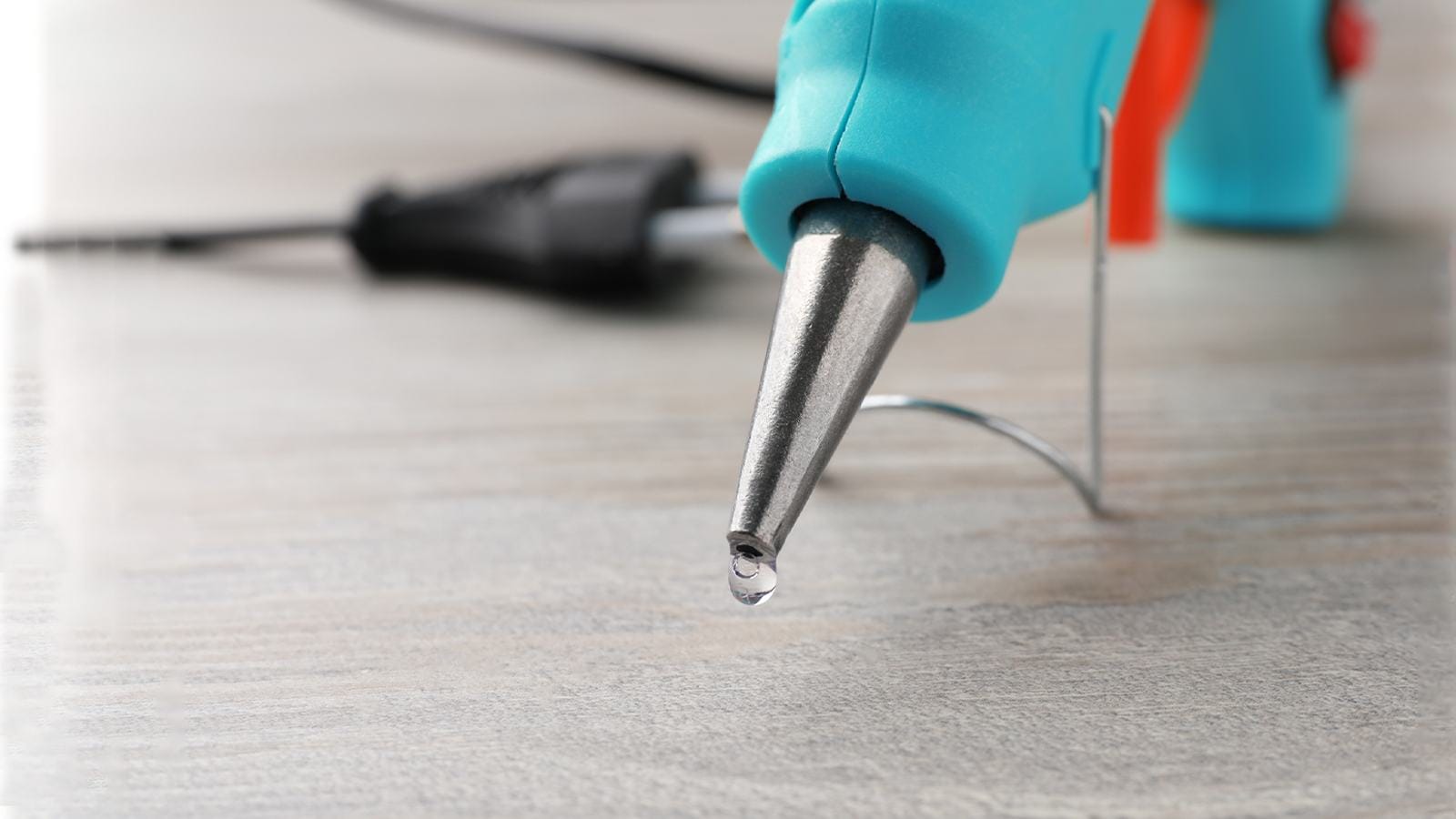
It’s best to use hot glue to attach fabrics together. Hot glue creates a bond with fabric by melting and cooling into a solid form. You use a hot glue gun to apply the molten thermoplastic polymer to the fabric where it needs to stick.
As the hot glue cools down, it transforms from liquid to solid, holding materials together. For fabrics like viscose, wool, linen, and even knitwear, using low-temperature glue guns is crucial as it prevents scorching or warping of the delicate fibers.
Pros and Cons of Using Hot Glue on Fabrics
Hot glue can be a convenient option for your fabric projects. But it’s essential to weigh the advantages and disadvantages before you decide to use it. Here’s a breakdown presented in table format:
| Pros | Cons |
|---|---|
| Quick drying, providing instant bond | Not a permanent solution, may not withstand wear and tear |
| Easy to apply with low-temperature glue guns | Can cause damage to delicate fabrics such as nylon |
| Ideal for temporary fixes or crafting | Potential to become brittle and peel off over time |
| No sewing skills required | May not hold up well to washing or heavy use |
| Low-temperature glue guns minimize fabric damage | Requires careful application to avoid burns or excess glue |
Types of Fabric Suitable for Hot Glue
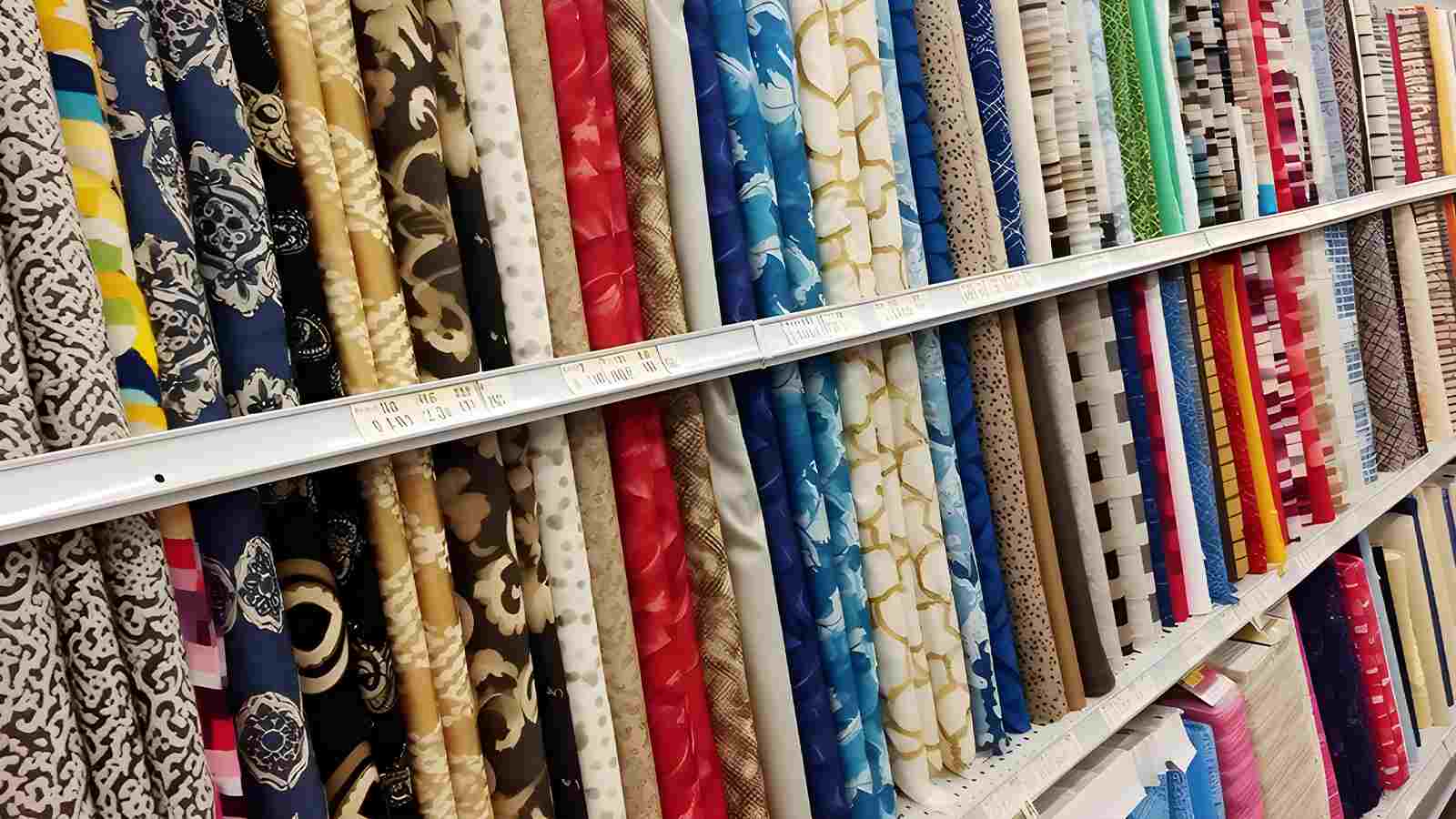
Choosing the right type of fabric is key when working with hot-melt adhesives.
- Thick fabrics like denim, canvas, and heavy cotton: These materials can withstand the heat without warping or burning, making them ideal for hot gluing.
- Felt and wool: The texture and density of these fabrics provide a good surface for the glue to latch onto. Plus, they’re less likely to show through any excess adhesive.
- Synthetic fibers such as polyester and polyvinyl chloride: They are designed to handle heat, which makes the hot glue application effective without damaging the fabric.
- Decorative fabrics that don’t need washing: Hot-glued items used for display or light use often hold up well since they aren’t subjected to the rigors of laundry.
- Sturdy upholstery textiles: When reupholstering furniture, a low-temp hot glue gun can be used on tougher textiles to fix trims or apply patches quickly.
Does Hot Glue Work on Fabric? Hot Glue vs. Traditional Sewing
When facing a fabric project, consider hot glue as an alternative to sewing. But there are many differences between them. So next, let’s talk about the differences in detail.
When to Use Hot Glue Instead of Sewing
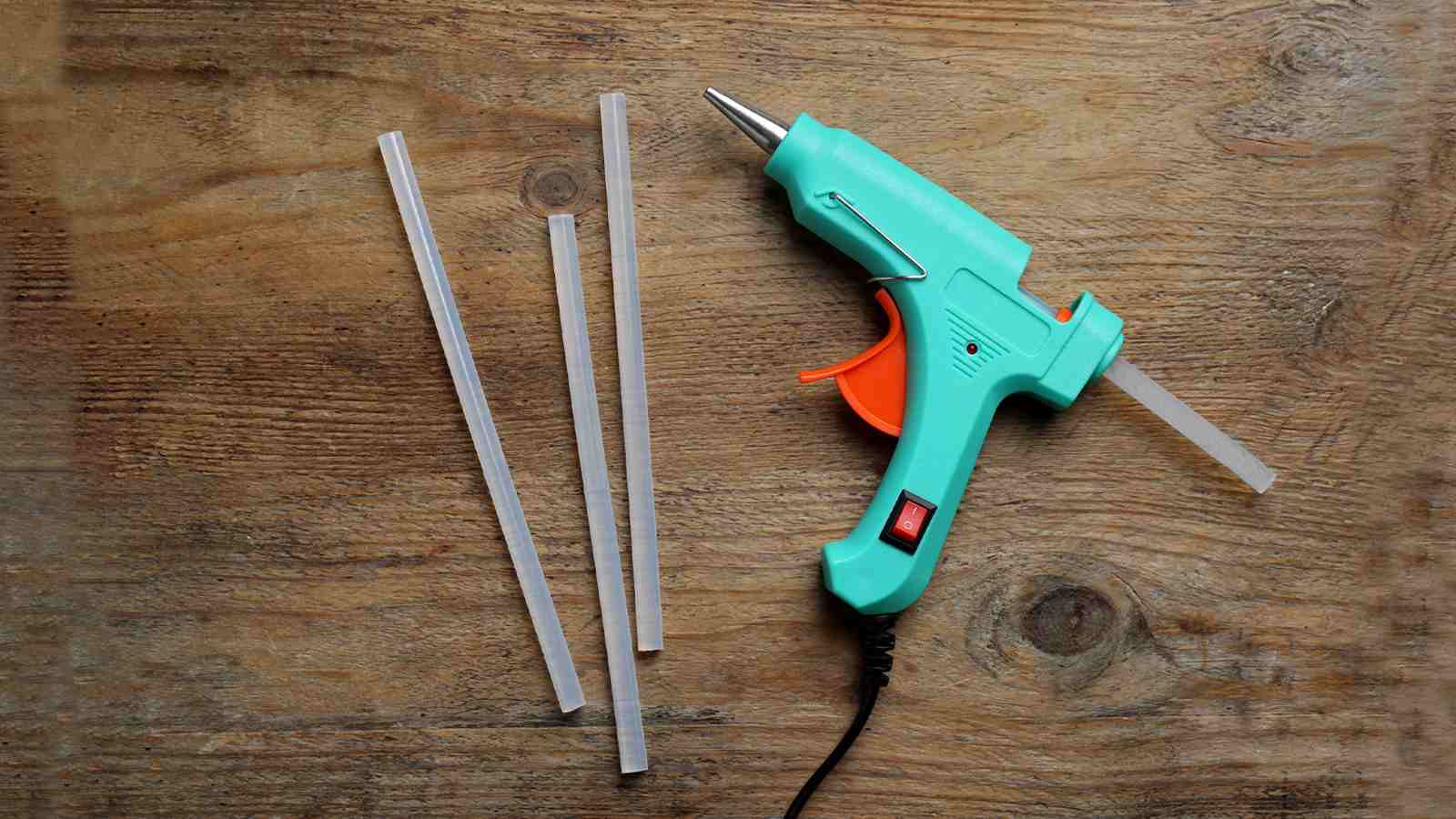
Hot glue is a viable option for quick fixes or temporary holds on a piece of fabric. Reach for your low-temperature hot glue gun if you need to tack down a hem quickly before an event. Or you can use it if you’re working with delicate fabrics that sewing needles might rip. It’s also ideal for attaching embellishments that are too awkward to sew by hand or machine.
In the realm of crafts and non-wearable projects, hot glue provides strong adhesion without the wait time of wet process engineering glues. Think about using it when creating decorative items where stitches won’t add to the aesthetic value, like sticking laminae in scrapbooks or assembling models made from thermoplastic materials.
Just ensure to select the proper viscosity of fabric glue so as not to soak through lighter textiles.
Limitations of Hot Glue in Fabric Applications
While low-temperature guns are safer for fabric, hot glue still presents challenges in textile applications. It’s not the best choice for every material. Certain fabrics, like nylon, can suffer damage from the heat and adhesiveness of the glue.
You need to consider whether hot glue is appropriate for your project, especially if it involves delicate or heat-sensitive fabrics.
Using hot glue also implies a trade-off between convenience and durability. Although it provides an instant bond, this hold isn’t as long-lasting as traditional sewing methods.
With time, use, and wash cycles, the bond can weaken considerably. If your fabric item will endure frequent laundering or heavy wear, relying only on hot glue may lead to disappointment, as it could finally fail under stress.
Tips on How to Use Hot Glue on Fabric Without Damaging It
To ensure success when using hot glue on fabric, consider the following tips.
Essential Factors to Consider When Selecting Fabric Glue
There are many types of glue on the market. So it’s hard to select the ideal hot glue for fabric projects. But all you need to do is understanding the key features that make some products stand out.
- Look for low-temperature options, as they are less likely to damage sensitive fabrics. This type of hot glue melts at a lower temperature, making it safer for sensitive textiles.
- Ensure the glue is compatible with various fabrics, whether it’s for laminating a sweater or attaching pieces of acetate.
- Check if the hot glue can resist washing and dry cleaning. Such glues maintain their bond strength even after the fabric undergoes cleaning processes.
- Verify quick drying time without sacrificing bond quality. Within a short drying time, the glue still provides a durable hold that withstands regular use and movement.
- Consider the ease of application. Hot glues that come in stick form can be easily inserted into a glue gun and applied with precision.
- Assess flexibility after drying. You want your fabric to maintain its natural feel and movement even after gluing.
- Confirm that the product does not yellow over time or affect the dyeing of the textile. A clear-drying glue will ensure that your project looks neat and professionally finished.
- Check user reviews focusing on textile engineering or textile manufacturing perspectives. Feedback from professionals can provide insight into different types of fabrics.
- Choose hot glues free from strong odors or fumes. This is particularly important for an enclosed space or a room without professional ventilation systems.
- Finally, consider environmentally friendly options when possible. Some hot glues are made with lower toxicity levels and more sustainable practices.
Essential Factors to Consider When Choosing a Hot Glue Gun to Use
Selecting the right glue gun for your fabric projects is crucial to achieving good results and preserving your materials. Here are some key factors you need to consider before making your choice:
- Temperature Control: Look for a low-temperature hot glue gun, as it’s less likely to damage delicate fabrics. High heat can cause burns or melt certain textiles, so a model with adjustable settings is ideal.
- Glue Stick Compatibility: Ensure the glue gun accepts hot glue sticks that are formulated for use with fabric. These sticks will bond without ruining the texture or appearance of your material.
- Gun Size and Ergonomics: Choose a glue gun that fits comfortably in your hand. A compact design can prevent fatigue during prolonged use, while an easy-to-use trigger will help you apply glue with precision.
- Nozzle Type: Consider a nozzle that’s narrow enough for detailed work but can also cover larger areas when needed. Some guns come with interchangeable nozzles for added versatility.
- Wattage Power: The power level of the glue gun often indicates how quickly it heats up and how well it maintains temperature. Opt for one that balances energy efficiency with performance.
- Cord Length and Mobility: A longer cord offers more freedom to move around as you work, while a cordless model provides ultimate mobility but may need recharging or battery replacement.
- Drying Time Indicator: Some advanced models feature indicators that show when the glue is ready to use and sufficiently cooled on fabric. They help take out the guesswork of when to proceed with your project.
- Stand Stability: Make sure the glue gun comes with a sturdy stand or base to rest it safely when not in use. This minimizes the risk of accidental burns or spills on your workspace.
- Built-In Features: Extra features like an on/off switch can enhance safety by preventing accidental heating when not in use.
Apart from the essential factors, here are a few top picks that stand out for their performance and compatibility with fabric:
| Glue Gun Model | Temperature Settings | Recommended Use | Extra Features |
|---|---|---|---|
| AdTech Ultra Low-Temp Cool Tool | Ultra Low Temperature | Ideal for delicate fabrics | Precision nozzle for accurate application |
| Surebonder HE-750 High-Temperature Glue Gun | Dual Temperature (high and low) | Best for mixed media, including thicker fabrics | Interchangeable nozzles and sturdy build |
| CCbetter Mini Glue Gun with Safety Stand | Low Temperature | Great for small projects and lightweight fabrics | Comes with a safety stand and quick heating feature |
| Gorilla Dual Temp Mini Hot Glue Gun | Dual Temperature (high and low) | Suitable for a variety of fabrics | Comfortable grip and precision tip for control |
How to Apply the Hot Glue to the Fabric for Durability
How can you apply hot glue on fabric successfully? You, of course, want to ensure both materials are primed for use to create a durable bond. Thus, the following tips will offer you help.
- Check that the fabric is clean and dry. Any oils, dust, or moisture can weaken the glue’s hold.
- Iron out wrinkles or creases in the fabric because a smooth surface helps the glue adhere better.
- Lay out the fabric on a flat, heat-resistant surface to prevent any unintended bonding or damage.
- Make sure you have a low-temperature hot glue gun, as high heat can scorch or melt fabrics.
- Insert a glue stick into the back of the hot glue gun and plug it in, giving it time to warm up.
- Test the flow of the hot melt adhesive on a piece of scrap fabric first to gauge how much glue dispenses with each squeeze.
- Spread a thin layer of hot glue over one surface instead of both. Too much glue may seep through textiles, creating a mess and weakening the bond.
- Keep your hands steady and apply a thin line of adhesive along the desired area. Avoid excess, which could seep through and cause stiffness.
- Press the fabrics together after applying the glue. The faster you work, the better, since hot glue dries quickly—usually within 1 to 10 minutes.
- Use even pressure when joining fabrics with hot glue. Applying consistent pressure ensures there are no gaps or weak spots in your bond.
- Apply extra layers of hot glue if joining thicker or heavily textured fabrics. Many thin, even layers are more effective than one thick layer.
- Let the glued items rest undisturbed while they cure completely. It usually takes about 24 hours to ensure the durability and strength of the bond.
- If dealing with frayed edges or detailed applications, use an applicator tip or toothpick to spread small amounts of hot glue where needed. This reduces excess and cleanup time.
Drying Time of Hot Glue
Hot glue takes only about 1 to 10 minutes to dry adequately for handling. It sets pretty quickly on fabric. Yet, it’s essential to allow the bond a full 24 hours to cure completely before putting any stress on it.
During this curing period, the adhesive transforms from being dry to touch into a more durable and lasting hold. It will keep pieces of fabric together firmly.
To make sure you get the best results when working with hot glue on fabrics, avoid rushing through your project. Allowing ample time for the glue to set ensures that all your effort pays off in a well-bonded creation.
Whether you’re doing quick repairs or creative crafts with textiles, patience is key.
Assess the Bond Strength of Hot Glue on Fabrics
To determine how well hot glue holds fabrics together, try a simple tug test after the glue dries.
This strength is crucial for crafts and quick fixes alike. Yet it’s essential not to assume this strength will apply to all types of fabric. Heavyweight materials often fare better than their lightweight counterparts.
Check the bonded area for any signs of weakening over time, especially if the item undergoes regular movement or stress. A good bond should maintain its hold without cracking or peeling away from the material.
Caring Tips for Fabric Bonded with Hot Glue
When it comes to caring for your fabric bonded with hot glue, treat it delicately. Avoid washing at high temperatures. Instead, opt for gentle hand cleaning or a cool machine cycle.
Always test a small area first and air dry to preserve the bond’s integrity. Regular maintenance like this ensures your hot-glued creations last longer without damage.
Can Hot-glued Fabric Be Washed?
Yes, you can wash fabric bonded with hot glue, but take extra care to preserve the integrity of the adhesive. Opt for hand washing in cool water and avoid scrubbing the glued area too harshly.
This gentle approach helps prevent the hot glue from softening and potentially losing its grip on the fabric.
If you must use a machine, choose a delicate cycle and place your glued fabric item inside a mesh laundry bag for added protection. Always allow it to air dry instead of tossing it into a dryer, which could heat up the glue too much.
If you notice any lifting or weakening after washing, reapply hot glue to reduce damage.
Tips for Maintaining Hot-Glued Fabric Items
Maintaining fabric items bonded with hot glue ensures they last longer and look good. Handle these fabrics with care to avoid weakening the glue bond.
- Check the label on your fabric for washing instructions before you start cleaning. Some hot-glued fabrics may not withstand high temperatures or heavy washing cycles.
- Use a gentle, cold water setting if machine washing is safe for your fabric. Hot water can melt the glue, causing it to lose its adhesive properties.
- Hand wash hot-glued items when possible to reduce agitation. This helps maintain the integrity of the glued areas.
- Avoid putting hot-glued fabrics in the dryer. The heat can weaken or melt the glue, so air drying is a safer option.
- Iron around glued areas with caution. Apply low heat and use a pressing cloth or parchment paper. These can shield the fabric from direct contact with the iron.
- Perform spot cleaning on stains near glued sections instead of soaking or scrubbing. Gentle dabbing minimizes stress on the bond.
- Reinforce any loose ends immediately with extra hot glue. Remember to follow proper application techniques for the best results.
Conclusion
Hot glue can indeed secure fabric for your creative projects. It offers a quick and versatile fix. Keep in mind that you should opt for low-temperature glue guns to protect delicate materials. By following the right techniques and using the proper tools, you’ll master the art of applying hot glue without harming your fabrics.
Dive into your next crafting session with confidence, knowing that hot glue has got you covered—just handle it with care!
Learn more fabric knowledge on Longan Craft Blog! Dive into the fabric world with Longancraft!

